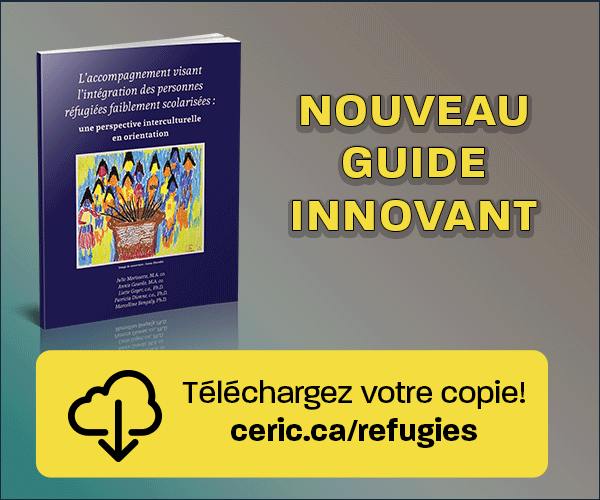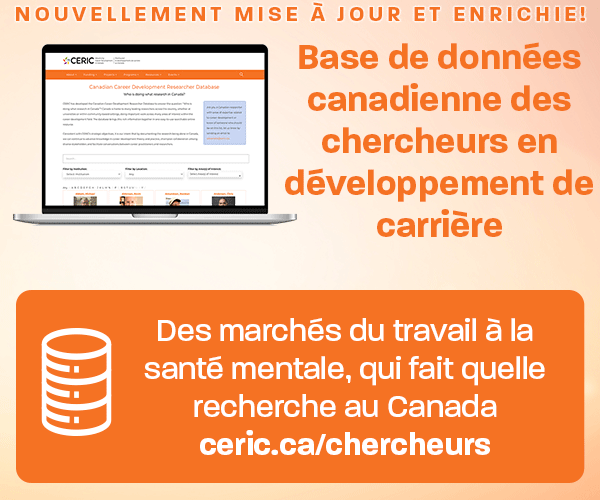Les tentacules de l'intimidation : L'impact des relations négatives relations négatives avec les pairs dans l'enfance sur les choix professionnels et éducatifs des adultes
Mots-clés :
intimidation, enfance négative, les relations entre pairs, professionnel, éducation, choixRésumé
Being victimized by a bully in childhood has many potential effects on facets of adult life. This study attempted to examine whether being bullied in childhood has had an impact on the employment and post-secondary educational choices of the participants. Brief interviews and a resiliency inventory were administered in this regard. It was discovered that most of the participants who were bullied chose their occupations because of an interest in their
field or a desire to assist others, rather than making their choices for financial reasons, or for reasons of familial pressure. In addition, participants who had
an elevated number of conditions that foster resiliency in their environment had diminished manifestations of the bullying on their future educational and
occupational selections. In fact, all of the participants had elevated resiliency levels, all were employed, and most were currently pursuing a profession or educational endeavor for which they were passionate. Consequently, it was recommended that bullying intervention stratagems should endeavor to produce academic environmental conditions that are positive despite the varied familial environment of the students. These programs should also promote a constructive learning environment.
Références
Bridges, W. (1980). Transitions: Making sense of life’s changes. Cambridge, MA: Perseus Books.
Coloroso, B. (2002). The bully, the bullied and the bystander. Toronto, ON: Harper Collins Publishers Ltd.
Cooper, N., Estes, C., & Allen, L. (2004). Bouncing back. Parks & Recreation, 39, 28-35. Retrieved May 13, 2006 from Academic Search Premier database.
Gottheil, N.F., & Dubow, E.F. (2001). The interrelationships of behavioral indices of bully and victim behavior. Bullying Behavior: Current Issues, Research, and Interventions, 2, 75-93.
Henderson, N. (2002). The resiliency quiz. Resiliency in Action Inc. Retrieved May 12, 2006, from http://www.resiliency.com/htm/resiliencyquiz.htm
Isom, M.D. (1998). The social learning theory. Tallahassee, FL: Florida State University. Retrieved April 25, 2006, from http://www.criminology.fsu.edu/crimtheory/bandura.htm
Knoester, C. (2003). Implications of childhood externalizing problems for young adults [Electronic Version]. Journal of Marriage and Family, 65, p. 1073-1081. Retrieved May 20, 2006, from ProQuest Psychology Journals database.
Lynch, E. (2004). Lasting damage. Nursing Standard, 18, 22-23. Retrieved May 2, 2006, from Academic Search Premier database.
O’Moore, A.M., & Minton, S.J. (2005). Evaluating the effectiveness of an anti-bullying programme in primary schools. Aggressive Behavior, 31, 609-622. Retrieved May 2, 2006, from Academic Search Premier database.
Ontario Ministry of Education. (n.d.) Registry of bullying prevention programs. Retrieved May 18, 2006, from http://www.edu.gov.on.ca/eng/teachers/bullyprevention/registry.html
Patterson, G. (2005). The bully as victim? Pediatric Nursing, 17, 27-30. Retrieved May 2, 2006, from Academic Search Premier database.
Swearer, S., Song, S., Cary, P., Eagle, J., & Mickelson, W. (2001). Psychosocial correlates in bullying and victimization: The relationship between depression, anxiety, and bully/victim status. Bullying Behavior: Current Issues, Research, and Interventions, 2, 95-121
Taylor, J., Harris, M., & Taylor, S. (2004). College-age children’s career decisions. Retrieved May 22, 2006, from Job Web Web site: http://www.dartmouth.edu/~csrc/pd
fs/ parentssay.pdf
Thompson, M., Cohen, L.J. & O’Neill Grace, C. (2002). Mom, They’re Teasing Me: Helping Your Child Solve Social Problems. New York, NY: Ballantine Books.
U.S Department of Health and Human Services. (n.d.) Why should adults care about bullying?. Retrieved May 11, 2006, from http://www.stopbullyingnow.hrsa.gov/adult/indexAdult.asp?Area=shouldadultscare
Voors, W. (2000). Bullying: Changing the course of your child’s life. Center City, MN: Hazeldon.
Watkins, C.E. (2000). Bullying throughout the life cycle. Baltimore, MD: Northern County Psychiatric Associates.
Willett, T. (2004). College choice literature review. Retrieved May 22, 2006, from Gavilan College Web site: http://www.gavilan.edu/research/reports/collegechoice%20refs.pdf

Téléchargements
Publié-e
Comment citer
Numéro
Rubrique
Licence

Cette œuvre est sous licence Creative Commons Attribution - Pas d'Utilisation Commerciale - Pas de Modification 4.0 International.











